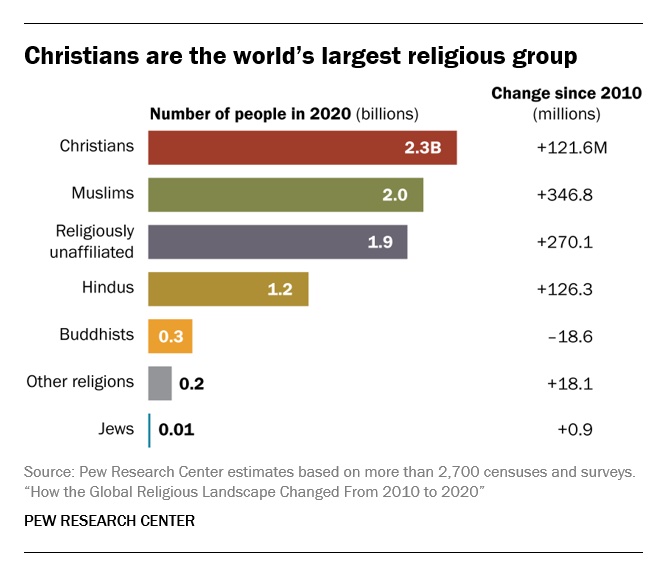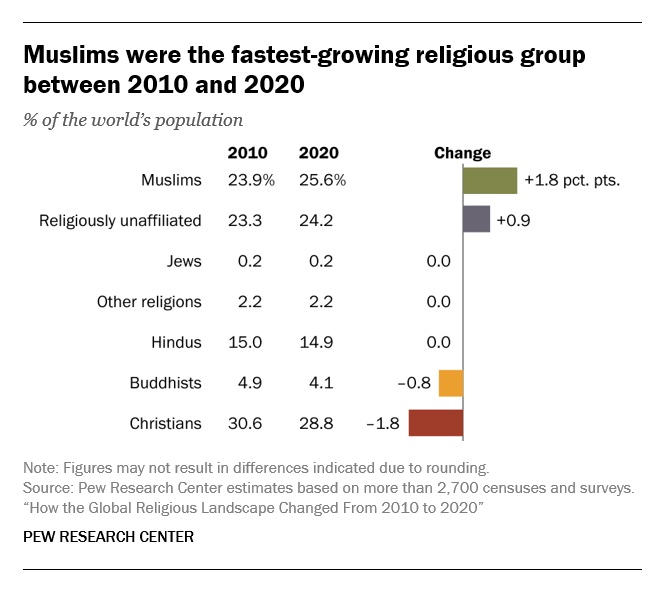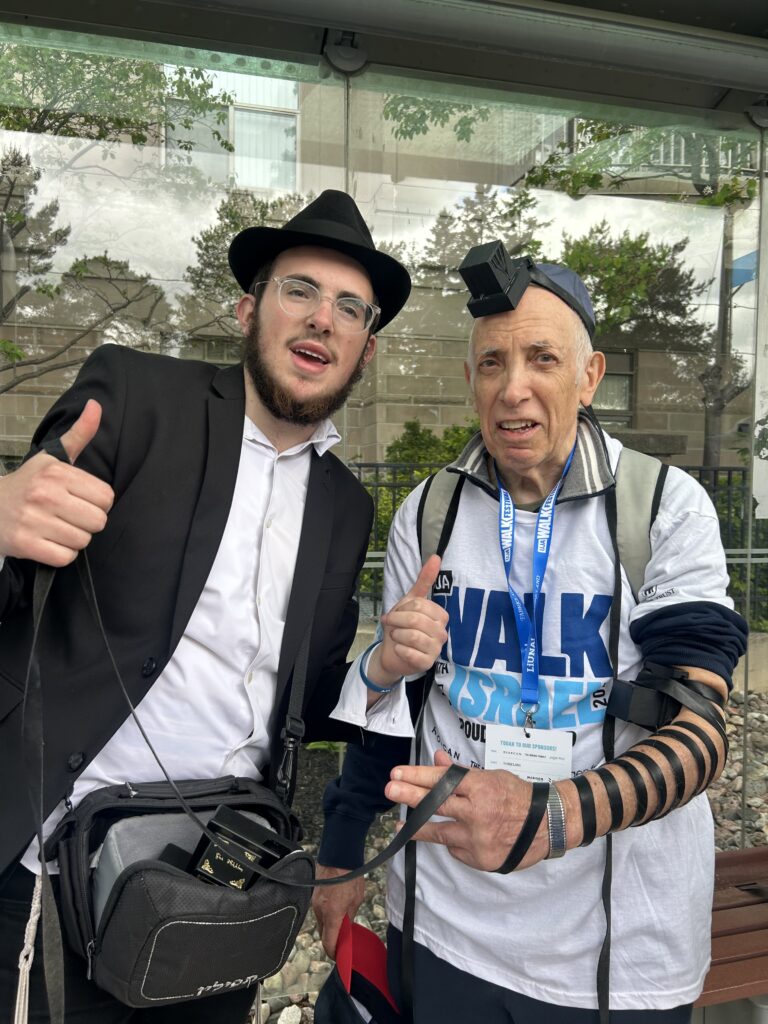Uncategorized
Sarajevo Jews celebrate a second Purim. For centuries, they weren’t alone.
(JTA) — Starting tonight, many Jews around the world will celebrate Purim in the same ways: by reading the story of the heroic Queen Esther, dressing in festive costumes and drinking alcohol.
For many of the 900 or so Jews in Bosnia and Herzegovina, it will be the first of two annual Purim celebrations.
Since 1820, locals have also observed the Purim de Saray (Saray being a root of the word Sarajevo) early in the Hebrew calendar month of Cheshvan, which usually falls in October or November of the Gregorian calendar.
In that year, the story goes, a local dervish was murdered, prompting the corrupt Ottoman pasha of Sarajevo, a high-ranking official, to kidnap 11 prominent Jews, including the community’s chief rabbi, a kabbalist named Moshe Danon. The pasha accused them of the murder of the dervish — who had converted from Judaism to Islam — and held them for ransom, demanding 50,000 groschen of silver from the Jewish community.
But the pasha, who was a transplant from elsewhere in the Ottoman empire, deeply offended the multiethnic populace of Sarajevo, who considered the Jewish community — then around one-fifth of the city’s entire population — an essential part of their home. So local Jews, Muslims and Christians rebelled together, storming the pasha’s palace and freeing the imprisoned community leaders.
Ever since, Bosnian Jews have celebrated that story by visiting the grave of the Sarajevan Jewish historian Zeki Effendi, who was the first to document it. Dozens also take part in a pilgrimage every summer to the grave of Rabbi Danon, who is buried in the south of Bosnia, not far from the Croatian border, where he died on his way to what was then Ottoman-controlled Palestine.
For centuries, several other Jewish communities around the world observed their own versions of Purim based on stories of local resistance to antisemitism, inspired by Esther and her uncle Mordecai, who in the original holiday story save all of Persia’s Jews from execution in the 5th century BCE.
Here are the stories behind some of those traditions.
Ancona, Italy
An aerial view of Ancona in 2006. (Wikimedia Commons)
Jews settled in and around Ancona on Italy’s Adriatic coast in the 10th century, and by the 13th century they had established a flourishing community, which included figures such as the Jewish traveler Jacob of Ancona — who may have beaten Marco Polo to China — and famed poet Immanuel the Roman, who despite his title was born in a town just south of Ancona.
Though the city’s Jewish community was largely spared by the Holocaust, it has slowly declined over the years and is believed to have fewer than 100 members today. What it is not short on, however, are local Purim stories — the city is known for multiple celebrations that were established over the centuries.
The first, marked on the 21st of the Hebrew month of Tevet (usually in January) was established at the end of the 17th century and marks an earthquake that nearly destroyed the city.
“On the 21st of Teveth, Friday evening, of the year 5451 (1690), at 8 and a quarter, there was a powerful earthquake. The doors of the temple were immediately opened and in a few moments it was filled with men, women and children, still half-naked and barefoot, who came to pray to the Eternal in front of the Holy Ark. A true miracle then took place in the Temple: there was only one light, which remained lit until it was possible to provide for it,” wrote Venetian Rabbi Yosef Fiammetta in 1741, in his text “Or Boqer,” meaning “the light of the morning.”
Other Ancona Purims were established a half and three-quarters of a century later, respectively. The story for the first commemorates fires that nearly destroyed the local synagogue but miraculously did not, and the next tells of a pogrom that nearly destroyed the community as Napoleon marched through Italy during the French Revolutionary Wars.
Today, these stories have largely faded into memory. But a few centuries ago, Italy had a high concentration of communities that celebrated local Purims — including in Casale Monferrato, Ferrara, Florence, Livorno, Padua, Senigallia, Trieste, Urbino, Verona and Turin — some into the 20th century.
“It would be hoped that the local Purims are not forgotten or that they are restored in the communities that have not completely died out,” the late Italian Rabbi Yehuda Nello Pavoncello once wrote, according to the Turin Jewish Community, “so that the memory of the events reconnects us to the infinite links of the chain of the generations that have preceded us, who have suffered.”
North Africa
An illustration shows King Sebastian of Portugal being fatally wounded at a battle in Morocco in 1578. (Bettmann/Getty Images)
The extra Purim phenomenon was not confined to Europe.
In Tripoli, Libya, local Jews established the so-called Purim Barghul after the deposition of a local tyrant in the late 18th century. Ali Burghul, an Ottoman officer who was installed after the downfall of the Qaramanli dynasty, ruled the region brutally for two years, treating minorities particularly harshly. After factions of the Qaramanlis were reconciled, Burghul was driven out. Jews would go on to celebrate that day, the 29th of Tevet (usually in January).
(Centuries later, in 1970, dictator Muammar Gaddafi established his own holiday, the Day of Revenge, which celebrated the expulsion of Italian officials from Libya; some say it also celebrated the exodus of Jews since the formation of the state of Israel. Within a few years after Gaddafi’s decree, Libya’s Jewish community had dwindled to less than two dozen, effectively ending the nearly 3,000-year history of Jews there.)
In northern Morocco, Jews commemorated the defeat of a Portuguese king, Don Sebastian, who attempted to take over parts of the country but was defeated in a battle in August 1578. Jews had believed that Sebastian would have tried to convert them to Christianity if he had prevailed.
Today only around 2,000 Jews remain in Morocco, but some Moroccan communities marked the day into the 21st century.
Saragossa
A view of an 11th-century palace in Zaragoza, Spain. The Purim of Saragossa story is set in either Zaragoza or Syracuse, Italy. (Hulton Archive/Getty Images)
Scholars still debate which city was the origin of the Purim of Saragossa story — it could have been Zaragoza in Spain or Syracuse in southern Sicily, which was often referred to in the medieval era as Siragusa. Both cities were part of the Spanish empire in 1492 and were depopulated of Jews following the Inquisition.
Either way, Sephardic descendants in places around the world, including Israel and the Turkish city of Izmir, observed their own Purim story by fasting on the 16th of the Hebrew month of Shevat — generally in February — and feasting on the 17th.
The story tells of an apostate named Marcus who slandered the Jewish community to a non-Jewish king, putting their status in jeopardy. But at the last minute, Marcus’ deception is revealed, and he is executed while the community is saved.
The story could have been entirely fabricated. According to Jewish historian Elliot Horowitz, the establishment of this second Purim story may have been a way for the descendants of Saragossan Jews, whether they are originally Spanish or Sicilian, to maintain a unique identity in the larger Sephardic diaspora.
“The Jewish communities of the eastern Mediterranean in the early modern period were often composed of émigré subcommunities, each of which was distinguished by the customs and liturgy of its place of origin,” he wrote in his 2006 book “Reckless Rites: Purim and the Legacy of Jewish Violence.” “The ‘Purim of Saragossa,’ the earliest manuscript evidence for which dates only from the mid-eighteenth century, may well have been ‘invented’ by former ‘Saragossans’ eager to maintain their distinct identity in the multicultural Sephardi Diaspora of the eastern Mediterranean.”
Regardless of its origins, the Megillah of Saragossa text continued to be published through at least the end of the 19th century. It was well known enough that an American Reform rabbi from New York would publish a stage play based off of it in the 1940s.
—
The post Sarajevo Jews celebrate a second Purim. For centuries, they weren’t alone. appeared first on Jewish Telegraphic Agency.
Uncategorized
How the Global Religious Landscape Changed from 2010 to 2020

Muslims grew fastest; Christians lagged behind global population increase
• Christians are the world’s largest religious group, at 28.8% of the global population. They are a majority everywhere except the Asia-Pacific and Middle East-North Africa regions. Sub-Saharan Africa has surpassed Europe in having the largest number of Christians. But Christians are shrinking as a share of the global population, as millions of Christians “switch” out of religion to become religiously unaffiliated.

• Muslims are the world’s second-largest religious group (25.6% of the world’s population) and the fastest-growing major religion, largely due to Muslims’ relatively young age structure and high fertility rate. They make up the vast majority of the population in the Middle East-North Africa region. In all other regions, Muslims are a religious minority, including in the Asia-Pacific region (which is home to the greatest number of Muslims).

• The religiously unaffiliated population is the world’s third-largest religious category (24.2% of the global population), after Christians and Muslims. Between 2010 and 2020, religiously unaffiliated people grew more than any group except Muslims, despite their demographic disadvantages of an older age structure and relatively low fertility. The unaffiliated made up a majority of the population in 10 countries and territories in 2020, up from seven a decade earlier.
• Hindus are the fourth-largest religious category (14.9% of the world’s population), after Christians, Muslims and religiously unaffiliated people. Most (99%) live in the Asia-Pacific region; 95% of all Hindus live in India alone. Between 2010 and 2020, Hindus remained a stable share of the world’s population because their fertility resembles the global average, and surveys indicate that switching out of or into Hinduism is rare.
• Buddhists (4.1% of the world’s population) are the only group in this report whose number declined worldwide between 2010 and 2020. This was due both to religious disaffiliation among Buddhists in East Asia and to a relatively low birth rate among Buddhists, who tend to live in countries with older populations. Most of the world’s Buddhists (98%) reside in the Asia-Pacific region, the birthplace of Buddhism.
• Jews, the smallest religious group analyzed separately in this report (0.2% of the world’s population), lagged behind global population growth between 2010 and 2020 – despite having fertility rates on par with the global average – due to their older age structure. Most Jews live either in North America (primarily in the United States) or in the Middle East-North Africa region (almost exclusively in Israel).
These are among the key findings of a Pew Research Center analysis of more than 2,700 censuses and surveys, including census data releases that were delayed due to the coronavirus pandemic. This report is part of the Pew-Templeton Global Religious Futures project, which analyzes global religious change and its impact on societies around the world. Funding for the Global Religious Futures project comes from The Pew Charitable Trusts and the John Templeton Foundation.
Uncategorized
Antisemitism in some unlikely places in America

By HENRY SREBRNIK Antisemitism flourishes in a place where few might expect to confront it – medical schools and among doctors. It affects Jews, I think, more emotionally than Judeophobia in other fields.
Medicine has long been a Jewish profession with a history going back centuries. We all know the jokes about “my son – now also my daughter – the doctor.” Physicians take the Hippocratic Oath to heal the sick, regardless of their ethnicity or religion. When we are ill doctors often become the people who save us from debilitating illness and even death. So this is all the more shocking.
Yes, in earlier periods there were medical schools with quotas and hospitals who refused or limited the number of Jews they allowed to be affiliated with them. It’s why we built Jewish hospitals and practices. And of course, we all shudder at the history of Nazi doctors and euthanasia in Germany and in the concentration camps of Europe. But all this – so we thought – was a thing of a dark past. Yet now it has made a comeback, along with many other horrors we assume might never reappear.
Since the Hamas attack on Israel on October 7, 2023, there has been a resurgence of antisemitism, also noticeable in the world of healthcare. This is not just a Canadian issue. Two articles on the Jewish website Tablet, published Nov. 21, 2023, and May 18, 2025, spoke to this problem in American medicine as well, referencing a study by Ian Kingsbury and Jay P. Greene of Do No Harm, a health care advocacy group, based on data amassed by the organization Stop Antisemitism. They identified a wave of open Jew-hatred by medical professionals, medical schools, and professional associations, often driven by foreign-trained doctors importing the Jew-hatred of their native countries, suggesting “that a field entrusted with healing is becoming a licensed purveyor of hatred.”
Activists from Doctors Against Genocide, American Palestinian Women’s Association, and CODEPINK held a demonstration calling for an immediate cease-fire in Gaza at the Hart Senate Office Building in Washington, D.C., Nov. 16, 2023, almost as soon as the war began. A doctor in Tampa took to social media to post a Palestinian flag with the caption “about time!!!” The medical director of a cancer centre in Dearborn, Michigan, posted on social media: “What a beautiful morning. What a beautiful day.” Even in New York, a physician commented on Instagram that “Zionist settlers” got “a taste of their own medicine.” A Boston-based dentist was filmed ripping down posters of Israeli victims and a professor at the University of Pennsylvania Perelman School of Medicine did the same. Almost three-quarters of American medical associations felt the need to speak out on the war in Ukraine but almost three-quarters had nothing to say about the war in Israel.
Antisemitism in academic medical centres is fostering noxious environments which deprive Jewish healthcare professionals of their civil right to work in spaces free from discrimination and hate, according to a study by the Data & Analytics Department of StandWithUs, an international, non-partisan education organization that supports Israel and fights antisemitism.
“Academia today is increasingly cultivating an environment which is hostile to Jews, as well as members of other religious and ethnic groups,” StandWithUs director of data and analytics, and study co-author, Alexandra Fishman, said on May 5 in a press release. “Academic institutions should be upholding the integrity of scholarship, prioritizing civil discourse, rather than allowing bias or personal agendas to guide academic culture.”
The study, “Antisemitism in American Healthcare: The Role of Workplace Environment,” included survey data showing that 62.8 per cent of Jewish healthcare professionals employed by campus-based medical centres reported experiencing antisemitism, a far higher rate than those working in private practice and community hospitals. Fueling the rise in hate, it added, were repeated failures of DEI (diversity, equity, and inclusion) initiatives to educate workers about antisemitism, increasing, the report said, the likelihood of antisemitic activity.
“When administrators and colleagues understand what antisemitism looks like, it clearly correlates with less antisemitism in the workplace,” co-author and Yeshiva University professor Dr. Charles Auerbach reported. “Recognition is a powerful tool — institutions that foster awareness create safer, more inclusive environments for everyone.”
Last December, the Data & Analytics Department also published a study which found that nearly 40 per cent of Jewish American health-care professionals have encountered antisemitism in the workplace, either as witnesses or victims. The study included a survey of 645 Jewish health workers, a substantial number of whom said they were subject to “social and professional isolation.” The problem left more than one quarter of the survey cohort, 26.4 per cent, “feeling unsafe or threatened.”
The official journal of the Alliance for Academic Internal Medicine concurs. According to “The Moral Imperative of Countering Antisemitism in US Medicine – A Way Forward,” by Hedy S. Wald and Steven Roth, published in the October 2024 issue of the American Journal of Medicine, increased antisemitism in the United States has created a hostile learning and practice environment in medical settings. This includes instances of antisemitic behaviour and the use of antisemitic symbols at medical school commencements.
Examples of its impact upon medicine include medical students’ social media postings claiming that Jews wield disproportionate power, antisemitic slogans at the University of California, Los Angeles (UCLA) David Geffen School of Medicine, antisemitic graffiti at the University of California, San Francisco (UCSF) Cancer Centre, Jewish medical students’ exposure to demonization of Israel diatribes and rationalizing terrorism; and faculty, including a professor of medicine at UCSF, posting antisemitic tropes and derogatory comments about Jewish health care professionals. Jewish medical students’ fears of retribution, should they speak out, have been reported. “Our recent unpublished survey of Jewish physicians and trainees demonstrated a twofold increase from 40% to 88% for those who experienced antisemitism prior to vs after October 7,” they stated.
In some schools, Jewish faculty are speaking out. In February, the Jewish Faculty Resilience Group at UCLA accused the institution in an open letter of “ignoring” antisemitism at the School of Medicine, charging that its indifference to the matter “continues to encourage more antisemitism.” It added that discrimination at the medical school has caused demonstrable harm to Jewish students and faculty. Student clubs, it said, are denied recognition for arbitrary reasons; Jewish faculty whose ethnic backgrounds were previously unknown are purged from the payrolls upon being identified as Jews; and anyone who refuses to participate in anti-Zionist events is “intimidated” and pressured.
Given these findings, many American physicians are worried not only as Jewish doctors and professionals, but for Jewish patients who are more than ever concerned with whom they’re meeting. Can we really conceive of a future where you’re not sure if “the doctor will hate you now?”
Henry Srebrnik is a professor of political science at the University of Prince Edward Island.
Uncategorized
The 2025 Toronto Walk (and talk ) for Israel

By GERRY POSNER There are walks and then there are walks. The Toronto UJA Walk for Israel on May 25, 2025 was one of a kind, at least as far as Canada and Jews are concerned. The number of people present was estimated to be 56,000 people or 112,000 total shoes. (How they get to that number is bewildering to me, since there is no one counting). This was 6,000 more than last year. Whether it is true or not, take it from me, it was packed. The synagogues in Canada should be so fortunate to get those numbers in total on High Holidays. The picture here gives you a sense of the size of the crowd.

This was my first walk in Toronto for Israel and I was with my granddaughter, Samantha Pyzer (not to forget her two friends whom she managed to meet at the site, no small feat, even with iPhones as aids). The official proceedings began at 9:00 a.m. and the walk at 10:00 a.m. There was entertainment to begin with, also along the way, and at the finish as well. The finish line this year was the Prosserman Centre or the JCC as it often called. The walk itself was perhaps 4 kilometres – not very long, but the walking was slow, especially at the beginning. There were lots of strollers, even baby carriages, though I did not see any wheelchairs. All ages participated on this walk. I figured, based on what I could see on the faces of people all around me that, although I was not the oldest one on the walk, I bet I made the top 100 – more likely the top 20.
What was a highlight for me was the number of Winnipeggers I met, both past and present. Connecting with them seemed to be much like a fluke. No doubt, I missed la lot of them, but I saw, in no particular order (I could not recall the order if my life depended on it): Alta Sigesmund, (who was, a long time ago, my daughter Amira’s teacher), Marni Samphir, Karla Berbrayer and her husband Dr. Allan Kraut and family. Then, when Samantha and I made it to the end and sat down to eat, I struck up a conversation with a woman unknown to me and as we chatted, she confirmed her former Winnipeg status as a sister-in- law to David Devere, as in Betty Shwemer, the sister of Cecile Devere. I also chanced upon Terri Cherniack, only because I paused for a moment and she spotted me. As we closed in near the finish, I met ( hey were on their way back), Earl and Suzanne Golden and son Matthew, as well as Daniel Glazerman. That stop caused me to lose my granddaughter and her pals. Try finding them amid the noise and size of the crowd – but I pulled it off.

As I was in line to get food, I started chatting with a guy in the vicinity of my age. I dropped the Winnipeg link and the floodgates opened with “ Did I know Jack and Joanie Rusen?” So that was an interesting few minutes. And I was not too terribly surprised to come across some of my Pickleball family. All of these meetings, along with spotting some of my sister’s family and other cousins, were carried on with the sound of the shofar as we moved along the way. In short, this was a happening. Merchants selling a variety of products, many of them Israeli based, were in evidence and, of course, the day could not have ended without the laying of tefillin, aided by Chabad, who have perfected the procedure to take less than a minute. See the photo. Chabad had a willing audience.
Aside from the joy of sharing this experience with my granddaughter, the very presence of all these Jews gathered together for a common reason made this day very special to me. However, there was a downside to the day. The downside was that, as we began to walk back to our car there was no other way I could figure out how to return when the rains came and came. While we walked faster, we were impeded by pouring rain and puddles. But Samantha wanted to persevere, as did I. We made it, but were drenched. My runners are still drying out as I write this two days later.
What with being surrounded by 56,000 people, the noise, the slow walking, and the rain, I can still say the day was a real highlight for me – one of the better moments since our arrival in Toronto in 2012. As well as the photos we took along the way, I have the reminder of the day, courtesy of the UJA, as evidenced from the photo. It was not just the walk, but the talk that accompanied the walk that made it so worthwhile for me. I would do it again, minus the rain.
